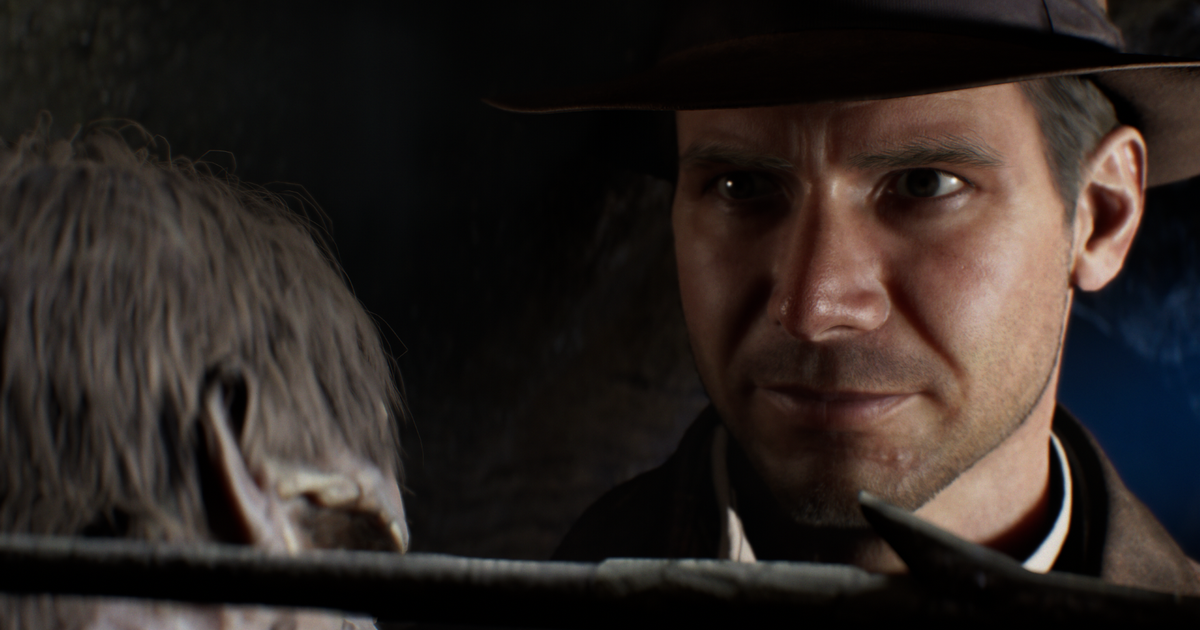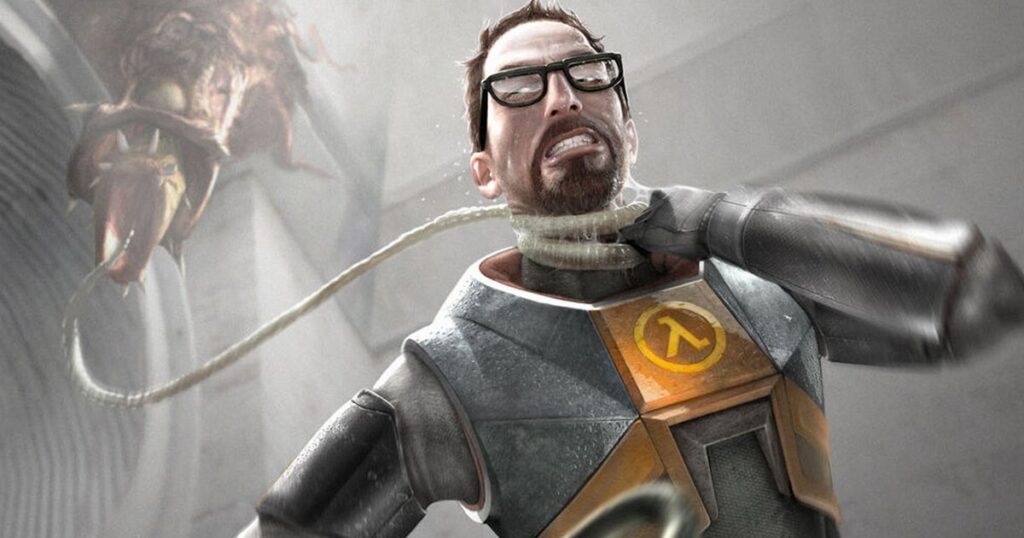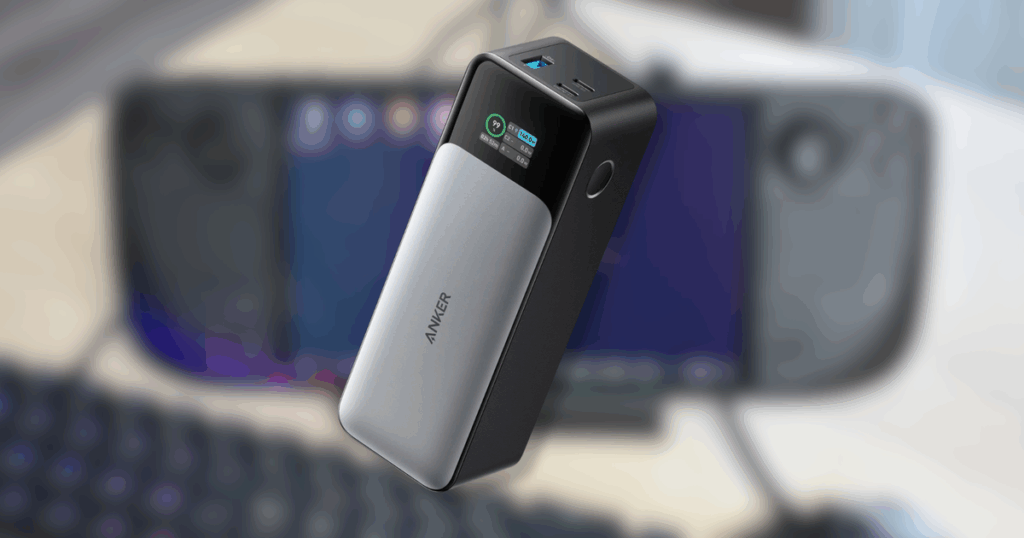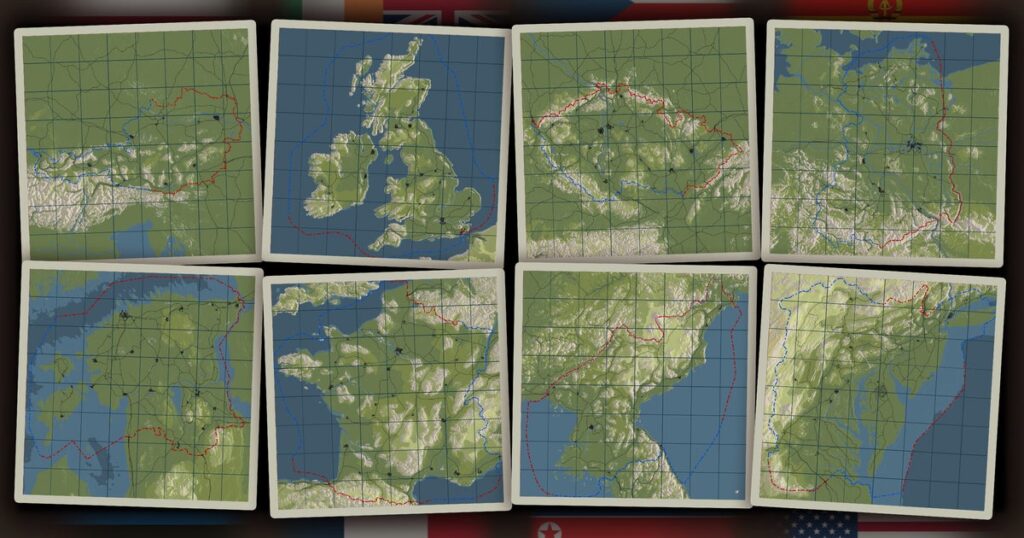If you told me last year that the face of the whole, respectful GPU, the visual PC game completely monitored the redundancy would be a Harrison Ford’s loss, I asked you which color you were eating correctly. However, we are here, with Indiana Jones and The Great Circle love its ray tracking to the point where the effects cannot be completely turned off.
We are in the territory that has not been discovered (HEH) here, folks. Games like the legendary Black: Wukong and Star Wars Outlaws also include RT effects in their lowest possible settings, but it is a software -based rail trace and therefore can run (although not all) on PCS/graphics card from the RTX period. The big circle is, as far as I know, the first person to do HardwareMandatory ray monitoring, so the popularity of GeForce RTX and new AMD cards in its system requirements.
It is a bold step showing a lot of belief in both PC players’ readiness and understanding to upgrade, and in goodwill is said to be a real adventure, truly illuminated can really be created. But is that a move, right? After testing it on a series of GPUs, on all its various graphic settings, I am still uncertain – especially when the AMD owner does not receive FSR’s upgrade support to help. That is in stark contrast to the NVIDIA systems, which can take advantage of both the standard DLSS and DLSS 3 frames (with the regeneration of DLSS 3.5 rays appear in a later patch).
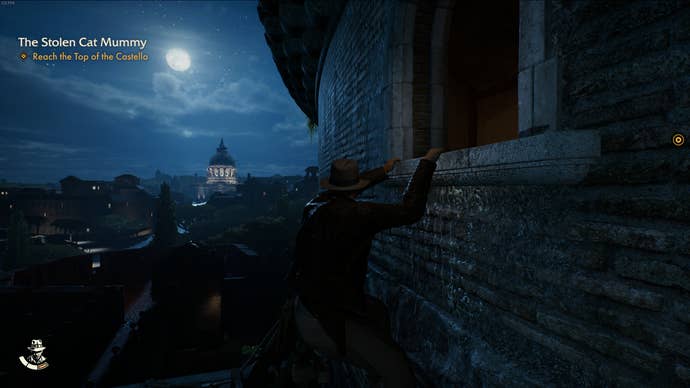
Indiana Jones and large circle system requirements and PC performance
Before we consider exactly how this is done, this is a quick reminder of the necessary specifications. Once again, pay attention to how the minimum GPU is almost the oldest/cheapest person with RT support based on the hardware that you can get-and how to run in the highest settings and resolution, the game does not want nothing shorter than the latest product set today.
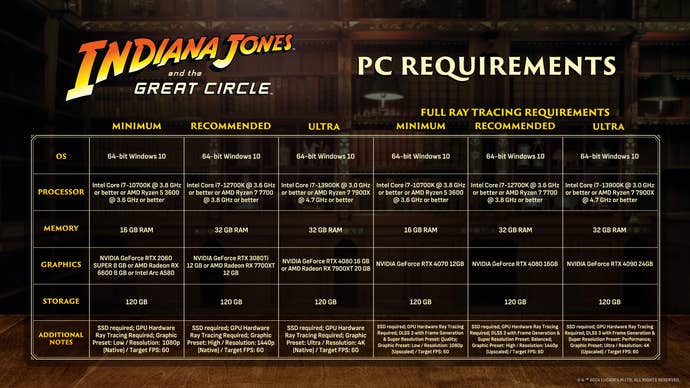
There are other noticeable issues here, such as the huge storage of SSDs and the demand for RAM is often high, but the demand for graphics cards capable of RT is definitely the most significant in these potential barriers. It seems that there is no stealth, it seems that when I try to start with a strong person (in their time) GTX 1070 and GTX 1080 Ti, the game will only return the error VK_KHR_RAY_QUERY. In English, that almost changes the tracking hard computers without any rays? Being lost.
So, what happens when you make the slot in the basic but ready GPU, along with the CPU and Min-Spec RAM? With my Core i5-11600K and 16GB DDR4 test, the modest Intel Arc A750 made an average of 67fps in a heavy NPC area. But that is only 1080p, on low pre -settings. The newer RTX 4060 is better, on average 63fps on Ultra in 1080p indigenous, but that has plummeted up to 39fps on Ultra and I could not even run with the highest supreme settings without problems.
Supreme also gave me problems on RTX 3070. This can manage 40fps with very Ultra above 1440p, provided that DLSS is also running in its quality mode, but only one level to switch to all black, as if there is no lighting effect. I guess that this pre -order only has such a traces of Hardcore rails, it overwhelms the modest source of the modest VRAM 8GB of these two GPUs, although it is still worried when considering the two widely used.
The tools increased to a RTX 4070 Ti improved stability. The supreme mode has run at 70fps smoothly at 1440p, with quality DLSS and only decreases to 69fps when I try the same installation at 4K. Fair with The Great Circle, it is likely that some CPU congestion is taking place at the end here, because the RTX 4090 also produces 69fps at 4K, using the same combination of supreme settings and DLSS quality.
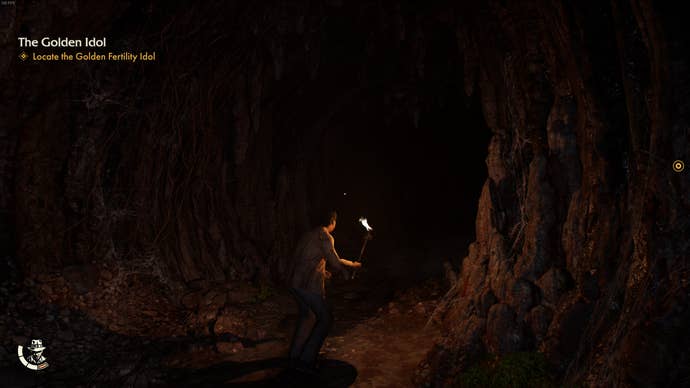
This is also, obviously, a very handsome game, not only in the abundance of its lighting effects but also the dense of the details in its environment. Paste your nose on the screen and you can find imperfect, like certain balls and structures that appear when you move closer to them, but you are more likely to stare at a bit of brilliant, brilliant forest or inside are arranged subtly.
Even if the RT requires hardware based on this, I am not completely convinced. There is a feeling that Great Circle has broken some taboos, even though the developers of beautiful games and technology want to make their works, they will still make efforts to make them play on many different PCs possible. Even the Cyberpunk 2077 trundles on GTX 1060.
In addition, if this is a glimpse of our pure future, you will hope it has a series of tools to help the frame tax counterpart. DLSS is good but it only works on NVIDIA GPU; Anyone who has an Intel or AMD card is stuffed, their only options are the original Taa or the dynamic resolution is not particularly impressive. This is very, very sudden with the way it increases or decreases Rez, so it seems that Indy is narrowed for a few seconds.
DLSS, too, can use a patch. In many times, on the RTX 4060, RTX 4070 Ti and RTX 3070, I found its quality and balance modes that were temporarily broken, really cutting speed instead of reducing them only when I changed the mode.
I also had a mixed result with a frame creation. Sometimes, it works excellent: For example, on the RTX 4090, it has increased on average 69fps on the maximum supreme settings of 133fps. Going to the lower head, RTX 4060 can also benefit, climb from 39fps is very extremely natural at 1080p to 73fps with quality DLS and the frame is activated. However, on rare occasions, it will also cut the speed instead of lifting them, to 6-7fps on RTX 4070 Ti. I am sure this can be easily repaired, but I have never seen DLS 3 broken like this and I have tested it in games since it was officially launched.
It is also noteworthy that this is not even the last form of Great Circle – it is set to add “full ray traces”, also known as the path of the link, in a update on December 9. Ray reconstruction is also “coming out”, so that it can help give advantage from the path that is likely to achieve higher performance. The RR has a fairly solid monitoring records on improving simultaneously monitoring effects and reducing its impact on framerates.
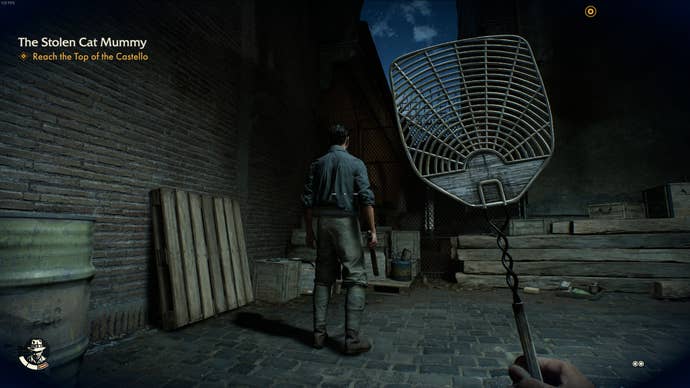
Indiana Jones and the best installation guide of Circle Circle
Obviously, it is impossible to completely turn off the trace of the ray means that the mid -range and lower level rigs will need to find another place for the lower settings that can compensate for performance. There is no shortage of options in the menu, from matte motion and color that converts to water and hair quality effects, but even if you can only be disturbed when hitting it in advance, I will say this: Do not worry about the supreme mode. It is lovely when it works, but the stability seems to be a problem rather than extremely extremely, and that is not exactly ugly compared to.
None of the pre -settings, actually. Just look at them:
Caption
Attribute
However, it is possible to perform a few important decreases in the way that will hold most of their extremely extremely level settings while the overall performance is clearly improved. Cut directly into Chase, these are the settings I propose to most PCs:
- Movement fuzzy cannon: Turn off
- Size of structural group: Medium
- Quality of glossy: Medium
- Decal output distance: Medium
- Global lighting quality: Short
- Premium resolution/DLSS: DLSS on quality
- Everything else: Very similar
In all this, it is really the size of the structural group – not the global lighting quality, with all its traces – bringing the best performance increase, at least on the RTX 4060 I used for testing. However, it is worth reducing global light, especially if you lack VRAM. DLSS, despite its malfunction, still has no intelligence.
All together, these settings have RTX 4060 on average my 71fps at 1080p, a major improvement from 39fps that is extremely extremely produced, and exactly what I have from the same GPU in advance with native TAA. In addition to creating frames and that becomes 112fps, although it is not absolutely necessary if you can feel the additional input delay that it adds. All other settings are not on the list above – water, reflexes, hair, volume, all jazz – or does not affect performance when lowering, or just doing so so small that it is not worth the reduction.
People with non -RTX graphics cards, though … commendation. Native Taa does not look horrible nor actually, but it is a great supervision to ignore all upgrades that are not large DLSS when a feature requires such as traces of rails are considered the center of a game that looks like.
